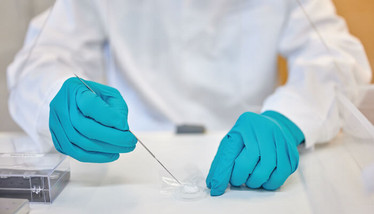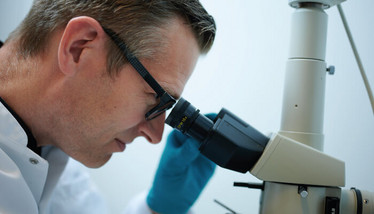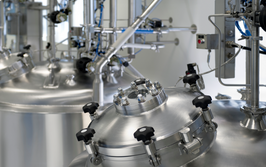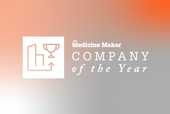
Reducing Size, Increasing Potential
What’s on the horizon for the field of nanomedicine?

This article is part of our special focus on "traditional" pharma: The Small Molecule Manufacturer (read more here). You can find more articles from The Small Manufacturer here.

Let’s face the brutal truth; in many ways, the pharma industry can be inefficient – for example, spending an estimated $150 billion every year on R&D, but getting only around 50 to 60 products to market. The reality is that making medicines is a challenging business.
With all the “low fruit” seemingly plucked, molecules are also becoming more complex. Indeed, in today’s pharma pipeline, a large proportion of compounds in clinical development exhibit solubility and bioavailability issues – and there are chests of compounds whose development was terminated for the same reasons. Additionally, many people are looking at existing drugs and how they can be improved using the FDA’s 505(b)(2) regulatory pathway (which allows for approval based partly on data not developed by the drug sponsor) – for example, a high-dose product that is already approved can be made into a lower dose therapeutic by achieving better absorption in the body.

Small and powerful
The industry standard for dealing with compounds with bioavailability and solubility challenges is spray drying, which can reduce particle size down as far as 500 nm, but yields can be low, so you may end up with only 5–10 percent of what you started with.
But alternative approaches using nanotechnology are emerging. For example, it is possible to reduce particle size down to 10 nm (see sidebar: Nanoform’s Technology), which opens myriad possibilities in small molecule drug development. Companies are also working on solutions that will nanonize biological molecules. In short, I believe that the future of nanotechnology in drug development is huge.
Surface area is directly correlated to the dissolution rate. When the size of a particle is halved from 1 micron to 500 nanometers, the surface area increases by a factor of two or three. Reducing this to 100 nanometers – which is straightforward with some technologies – increases the surface area by a factor of 30 or 40 because it changes the radiance of the particles and allows water to penetrate more easily. And then at 50 nanometers – which is possible with approaches available today – you can achieve a 1000-fold increase in surface area.
Nanotechnology has been used by pharma companies for well over a decade. One of the earliest examples is nanomilling, which has been adopted for certain products but tends to be a highly complex process. In recent years, a variety of other approaches have emerged for the nanosizing compounds. For example, I used to work for a company called Prosonix, which used ultrasound to control crystallization. Though the approach was novel, it could only get down to around 200–300 nanometers. We need to go further to intrinsically affect solubility. Today, there are some bottom-up technologies that can make particles of around 100–200 nanometers. Metaphorically, these involve using a hammer to smash the crystals to pieces. They use polymers, bio-cells, liposomes or conjugated nanoparticles, as well as other formulation re-agents, but these processes aren’t always stable, and the formulations can be limiting.
And the future…?
Nanotechnology could help reduce drug dosage by 90 percent, which could lead to numerous advantages, particularly for patient compliance. A lower dosage would remove some side effects as material would not be sitting in the liver and causing issues.
I also see a lot of opportunities in the drug delivery space. For example, in ocular applications, delivering a nano-suspension directly to the eye would mean avoiding the blurred vision that results from micron-sized particles. Nanoparticles can also penetrate through to the back of the eye and have sustained release, as opposed to a solution that is just quickly absorbed into the bloodstream.
There are also opportunities for transdermal delivery. Nanoparticles could penetrate the skin membrane more easily, potentially allowing for smaller patches. However, the dream of drug delivery would be blood-brain barrier penetration. If nanoparticles could cross this barrier, we could avoid intracranial injections.
These are just some of the ideas for how nanotechnology can help the industry to develop better therapeutics for patients. The motto of our company? “Small is powerful,” which suits nanotechnology very well. Most major pharma companies now have dedicated teams exploring the potential of nanotechnology. The pharma industry is known to be conservative but it is positive to hear so many interesting conversations taking place. Drug development is advancing and the industry is certainly becoming more open to evaluating novel approaches.
Nanoform’s Technology
The idea behind Nanoform began in 2008, when collaboration began between Edward Hæggström, a professor of physics – and now our CEO – and Jouko Yliruusi, a pharmaceutical technologist at the University of Helsinki, Finland. After years of work, the first patent application was submitted for a particle engineering technology called the Controlled Expansion of Supercritical Solutions (CESS). The technology allows API nanoparticles down to 10 nm to be created directly from solution. Nanoform was founded in 2015 and in 2017 we began work on our first GMP facility.
Our technology has a small footprint – the system is probably the size of a large table. We take the bulk API, put it into a charging chamber and introduce carbon dioxide under pressure. The carbon dioxide gas becomes a liquid and forms a suspension of the API particles, typically operating in a supercritical space just over 50°C and 50 bar pressure, but with the ability to go all the way up to 1000 bar if necessary. Once all of the API has dissolved in carbon dioxide, the supercritical solution travels through a valve and there is a very small pressure drop, which initiates nucleation. We then control the temperature and the pressure as those nucleated particles travel through the line in a nano-nuclei suspension. There is a second pressure drop, and the material is atomized with supercritical carbon dioxide into a collection chamber – just like spray drying. This is performed through a central nozzle – around it, other nozzles blow -78°C carbon dioxide onto the central plinth, coating all of the droplets in what looks like snow.
You form a mountain of “snow” in your collection chamber, and inside every snowflake is a nanoparticle. The snowflakes are important because they stop the particles from sticking together and becoming larger particles. Once you have collected this mountain of snow in the collection chamber, you release the pressure and allow the carbon dioxide to sublime off as a gas, and it goes from solid to gaseous phase, leaving a dry powder of nanocrystals. We have shown that we can now get that material into nano-suspensions and nano-powders very easily. The resulting material has a good shelf life and stability.
Chief Commercial Officer at Nanoform, Finland.



















